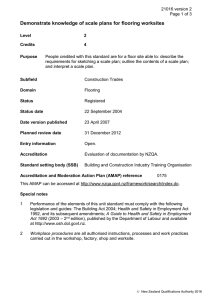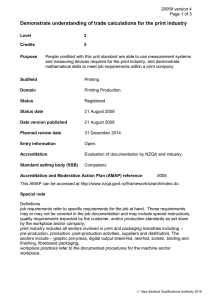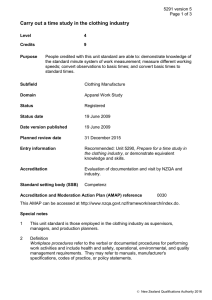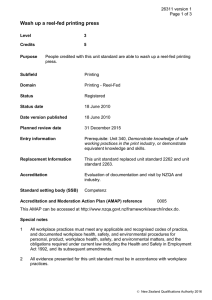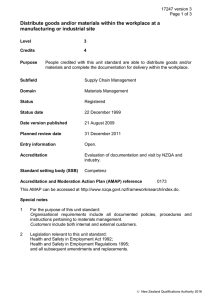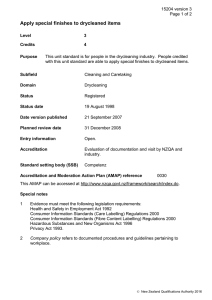3488 Write business correspondence for a workplace
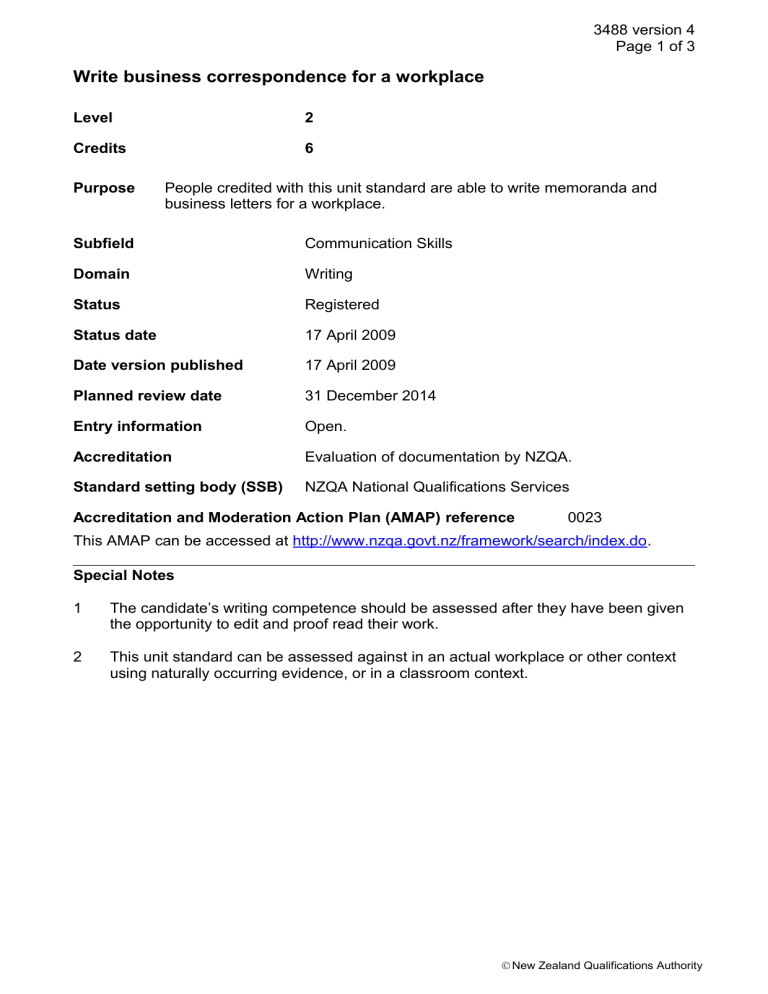
3488 version 4
Page 1 of 3
Write business correspondence for a workplace
Level
Credits
2
6
Purpose People credited with this unit standard are able to write memoranda and business letters for a workplace.
Subfield
Domain
Status
Status date
Communication Skills
Writing
Registered
17 April 2009
Date version published
Planned review date
Entry information
17 April 2009
31 December 2014
Open.
Accreditation Evaluation of documentation by NZQA.
Standard setting body (SSB) NZQA National Qualifications Services
Accreditation and Moderation Action Plan (AMAP) reference 0023
This AMAP can be accessed at http://www.nzqa.govt.nz/framework/search/index.do
.
Special Notes
1 The candidate’s writing competence should be assessed after they have been given the opportunity to edit and proof read their work.
2 This unit standard can be assessed against in an actual workplace or other context using naturally occurring evidence, or in a classroom context.
3488 version 4
Page 2 of 3
Elements and performance criteria
Element 1
Write memoranda for a workplace.
Range any two of – write a routine report, make a request for information, make an announcement, give instructions, provide information.
Performance criteria
1.1
1.2
The format, content, and context of the memoranda are applicable to a workplace.
Information presented is accurate in detail, clear in meaning, ordered in a logical sequence, and relevant to the context.
1.3
1.4
Element 2
Vocabulary and tone fit the situation, occasion, subject matter, and audience.
Any punctuation, spelling, and/or grammatical errors do not appreciably affect the intended message.
Write business letters for a workplace.
Range letters may include but are not limited to – letter of explanation, letter of enquiry, letter providing comprehensive and detailed information, letter responding to a complaint.
Evidence of two letters is required.
Performance criteria
2.1
The format, content, and context of the letters are applicable to a workplace.
2.2
2.3
Information presented is accurate in detail, clear in meaning, ordered in a logical sequence, and relevant to the context.
Vocabulary and tone fit the situation, occasion, subject matter, and audience.
2.4
Any punctuation, spelling and/or grammatical errors do not appreciably affect the intended message.
Please Note
Providers must be accredited by NZQA, or an inter-institutional body with delegated authority for quality assurance, before they can report credits from assessment against unit standards or deliver courses of study leading to that assessment.
Industry Training Organisations must be accredited by NZQA before they can register credits from assessment against unit standards.
3488 version 4
Page 3 of 3
Accredited providers and Industry Training Organisations assessing against unit standards must engage with the moderation system that applies to those standards.
Accreditation requirements and an outline of the moderation system that applies to this standard are outlined in the Accreditation and Moderation Action Plan (AMAP). The
AMAP also includes useful information about special requirements for organisations wishing to develop education and training programmes, such as minimum qualifications for tutors and assessors, and special resource requirements.
Comments on this unit standard
Please contact the NZQA National Qualifications Services nqs@nzqa.govt.nz
if you wish to suggest changes to the content of this unit standard.
